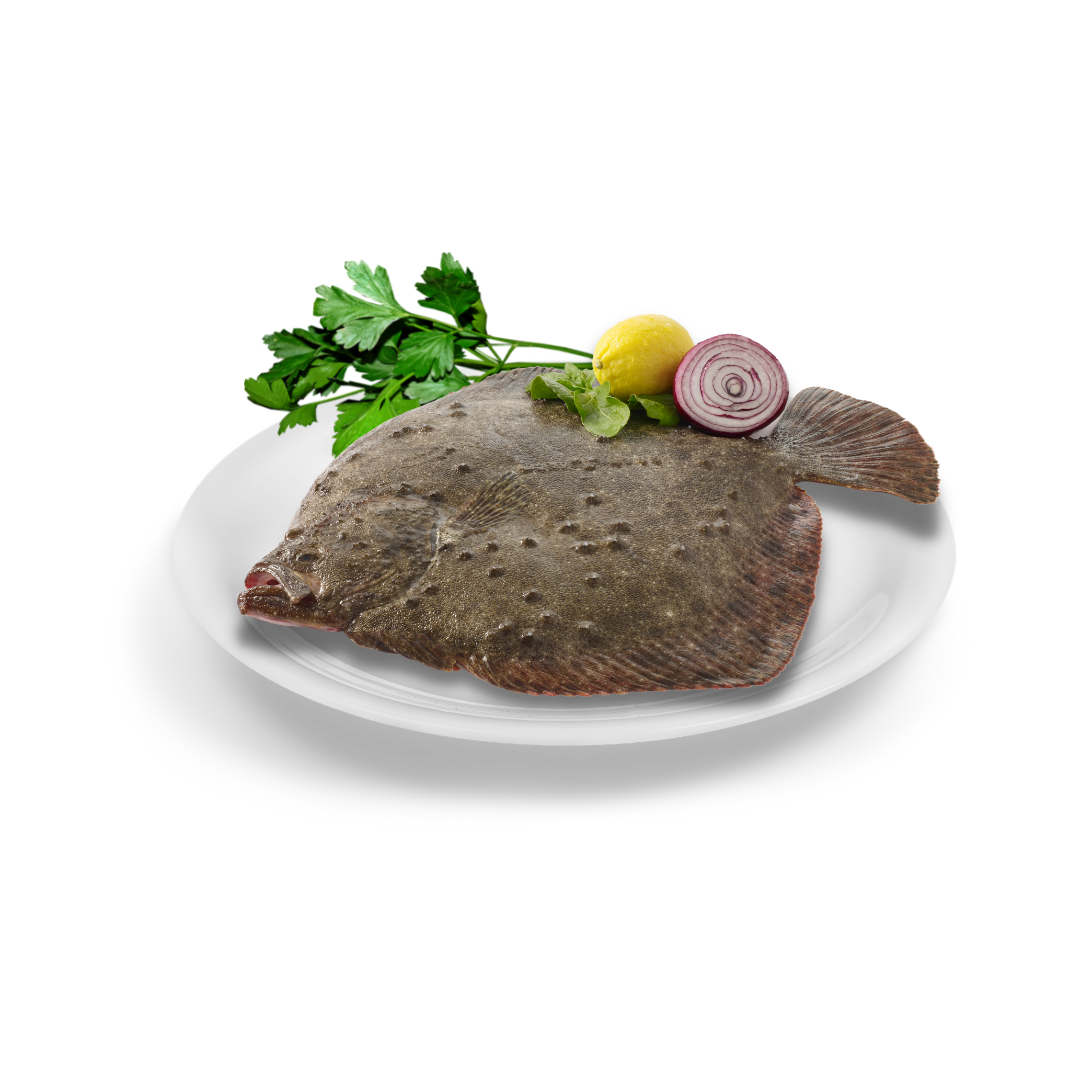Turbot is a type of flatfish that belongs to the Scophthalmidae family. It is a saltwater fish that is commonly found in the Mediterranean Sea and the Atlantic Ocean. Turbot is known for its mild, delicate flavor and firm, flaky texture, making it a popular choice for seafood lovers.
Health Benefits of Turbot:
- Turbot is a low-calorie fish, making it a great choice for those trying to manage their weight.
- It is a good source of protein, which is important for building and repairing tissues in the body.
- Turbot is rich in omega-3 fatty acids, which are essential for brain and heart health.
- It contains vitamins and minerals that are essential for overall health, including vitamin B12, selenium, and phosphorus.
Diseases that can be cured by Turbot:
While there is no cure for any disease, consuming turbot can provide health benefits that can help prevent or manage certain health conditions. Some of the diseases that may be prevented or managed by consuming turbot include:
- Cardiovascular disease
- Arthritis
- Alzheimer’s disease
- Depression
- Asthma
- Type 2 diabetes
Energy and Macronutrients in 50g of Turbot
| Nutrient |
Quantity per 50g serving
|
|
| Calories | 30 | |
| Protein: | 6.2g | |
| Carbohydrates | 0g | |
| Fat | 0.6g | |
| Fiber | 0g | |
| Water | 43.6g |
Vitamins in 50g of Turbot:
| Vitamin | Quantity per 50g serving |
| Vitamin A | 10mcg |
| Vitamin B1 | 0.04mg |
| Vitamin B2 | 0.04mg |
| Vitamin B3 | 1.1mg |
| Vitamin B6 | 0.1mg |
| Vitamin B12 | 0.7mcg |
| Vitamin C | 0mg |
| Vitamin D | 5mcg |
| Vitamin E | 0.4mg |
| Vitamin K | 0.2mcg |
| Folate | 6mcg |
| Biotin | 0.6mcg |
Minerals in 50g of Turbot:
| Mineral | Quantity per 50g serving |
| Calcium: | 12mg |
| Iron: | 0.2mg |
| Iodine: | 25mcg |
| Zinc: | 0.4mg |
| Magnesium: | 11mg |
| Phosphorus: | 92mg |
| Potassium: | 166mg |
| Sodium: | 13mg |
| Chloride: | 26mg |
| Copper: | 0.02mg |
| Chromium: | 0mcg |
| Fluoride: | 1mcg |
| Molybdenum: | 2mcg |
| Manganese: | 0.01mg |
| Selenium: | 12mcg |
What is Turbot?
Turbot is a flatfish species found in the Atlantic, Pacific, and Mediterranean oceans.
What are the nutritional benefits of Turbot?
Turbot is a good source of protein, omega-3 fatty acids, vitamins, and minerals.
How do I clean and fillet Turbot?
To clean and fillet Turbot, use a sharp knife to cut along the spine and remove the head, then cut along the bones to remove the fillets.
How do I store Turbot?
Turbot should be stored in the refrigerator and consumed within a day or two of purchase.
How much does Turbot cost per pound?
The cost of Turbot varies depending on the region and season, but it typically ranges from $15 to $25 per pound.
What are the cooking times for Turbot?
The cooking times for Turbot vary depending on the method used, but generally range from 8 to 12 minutes.
How do I grill Turbot?
To grill Turbot, brush it with oil and season it, then grill over medium-high heat for 3 to 4 minutes per side.
How do I bake Turbot?
To bake Turbot, place it in a baking dish and bake at 375°F for 10 to 15 minutes.
How do I fry Turbot?
To fry Turbot, coat it in flour or breadcrumbs and fry in hot oil for 3 to 4 minutes per side.
How do I make a Turbot sauce?
To make a Turbot sauce, combine butter, garlic, lemon juice, and herbs in a pan and cook until the butter is melted and the sauce is fragrant.
Is Turbot sustainable?
Turbot farming can be sustainable if done responsibly, but there are concerns about the environmental impact of large-scale operations.
What are the health benefits of eating Turbot?
Turbot is a good source of protein, omega-3 fatty acids, vitamins, and minerals, which can promote heart health, brain function, and overall well-being.
How do I make a Turbot ceviche?
To make a Turbot ceviche, marinate diced Turbot in lime juice and seasonings for several hours, then serve with avocado and tortilla chips.
How do I season Turbot?
Turbot can be seasoned with a variety of herbs and spices, including lemon, garlic, thyme, and rosemary.
What are the best side dishes to serve with Turbot?
Turbot pairs well with a variety of side dishes, including roasted vegetables, rice pilaf, and steamed asparagus.
How do I choose the freshest Turbot?
When selecting Turbot, look for bright, clear eyes, firm flesh, and a clean, mild odor.
What are the differences between wild-caught and farm-raised Turbot?
Wild-caught Turbot may have a slightly different flavor and texture compared to farm-raised Turbot, and there are concerns about the environmental impact of large-scale farming operations.








